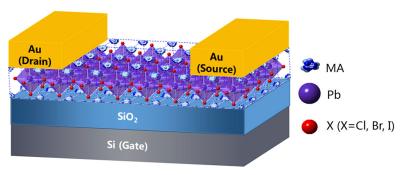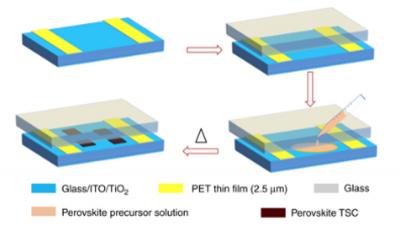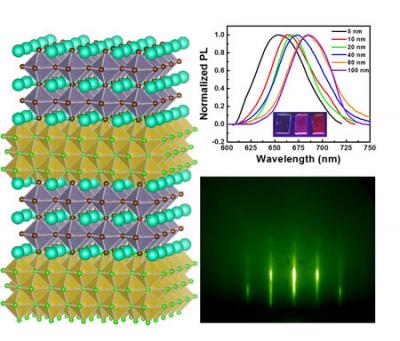Researchers create a field-effect transistor using a single-crystal, “paint-on” perovskite
An international team of researchers, led by Aram Amassian at North Carolina State University, has demonstrated the construction of field-effect transistors using a single crystal, hybrid perovskite semiconductor.

While the design of perovskite solar cells has matured to the point of near-commercialization, making hybrid perovskites function as field-effect transistors has been more of a challenge. This is in part due to the fact that perovskite films typically consist of multiple crystals with random orientations that include grain boundaries and various kinds of defects in their atomic crystal lattices. These often limit how well charge carriers (electrons or 'holes') can move through them.




